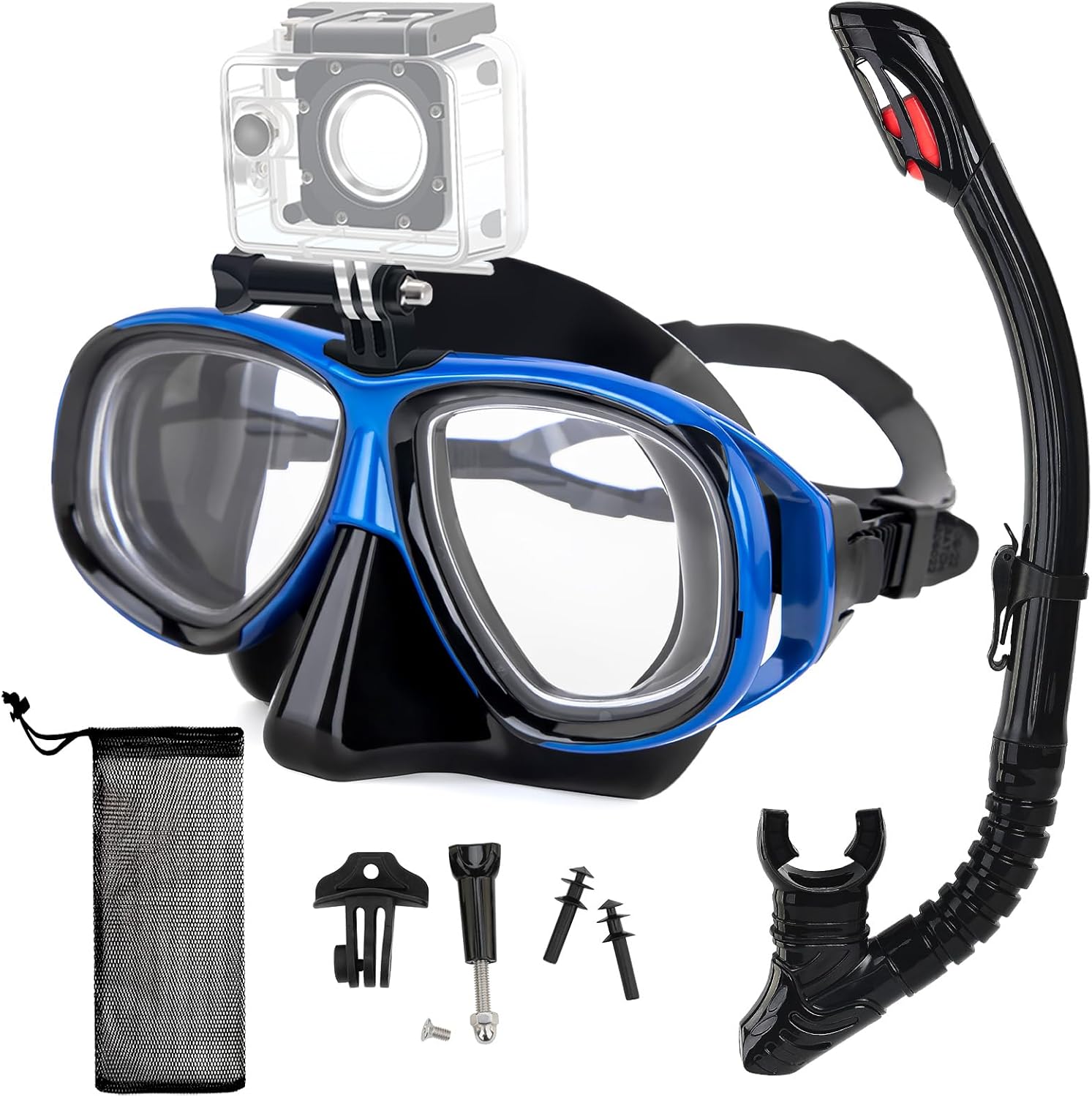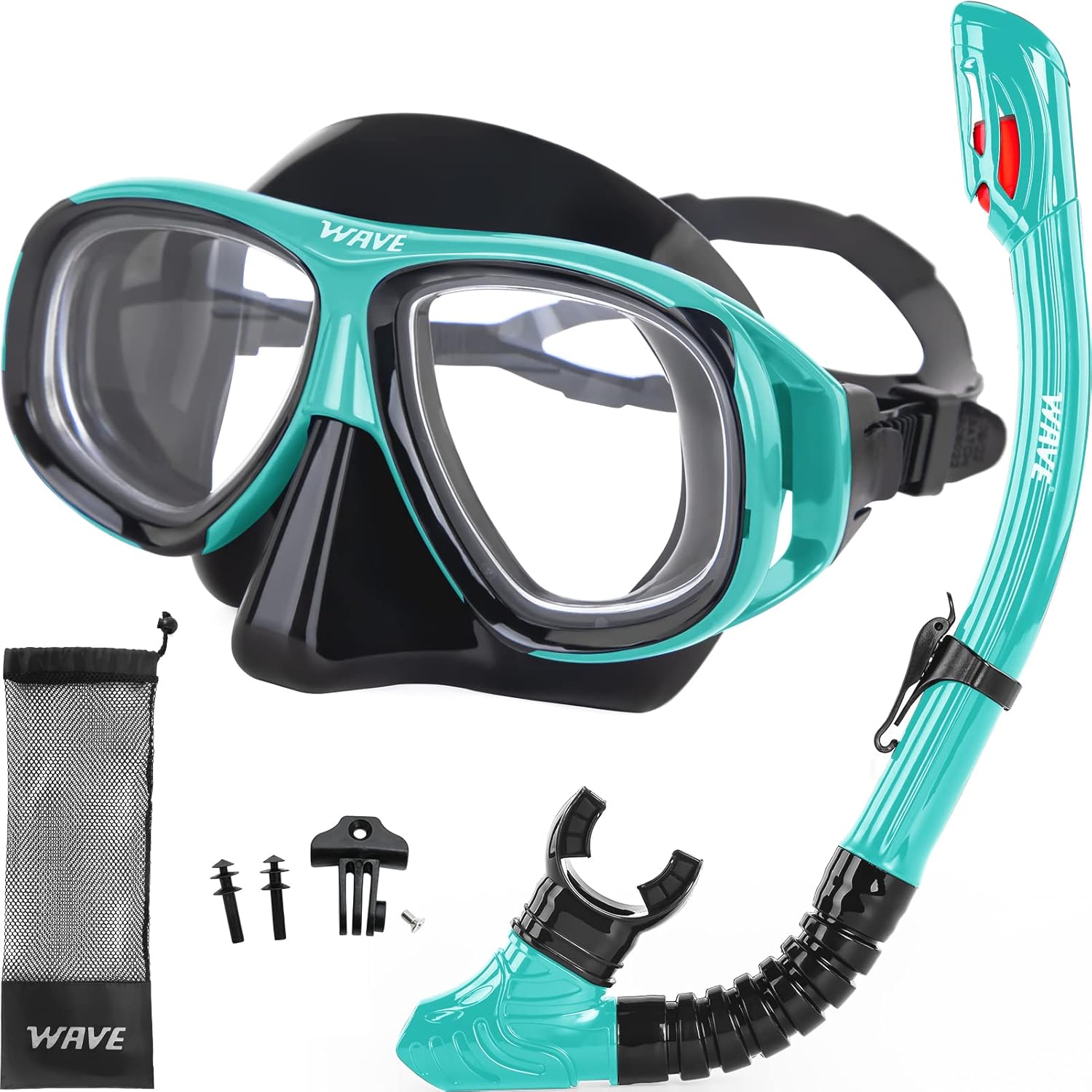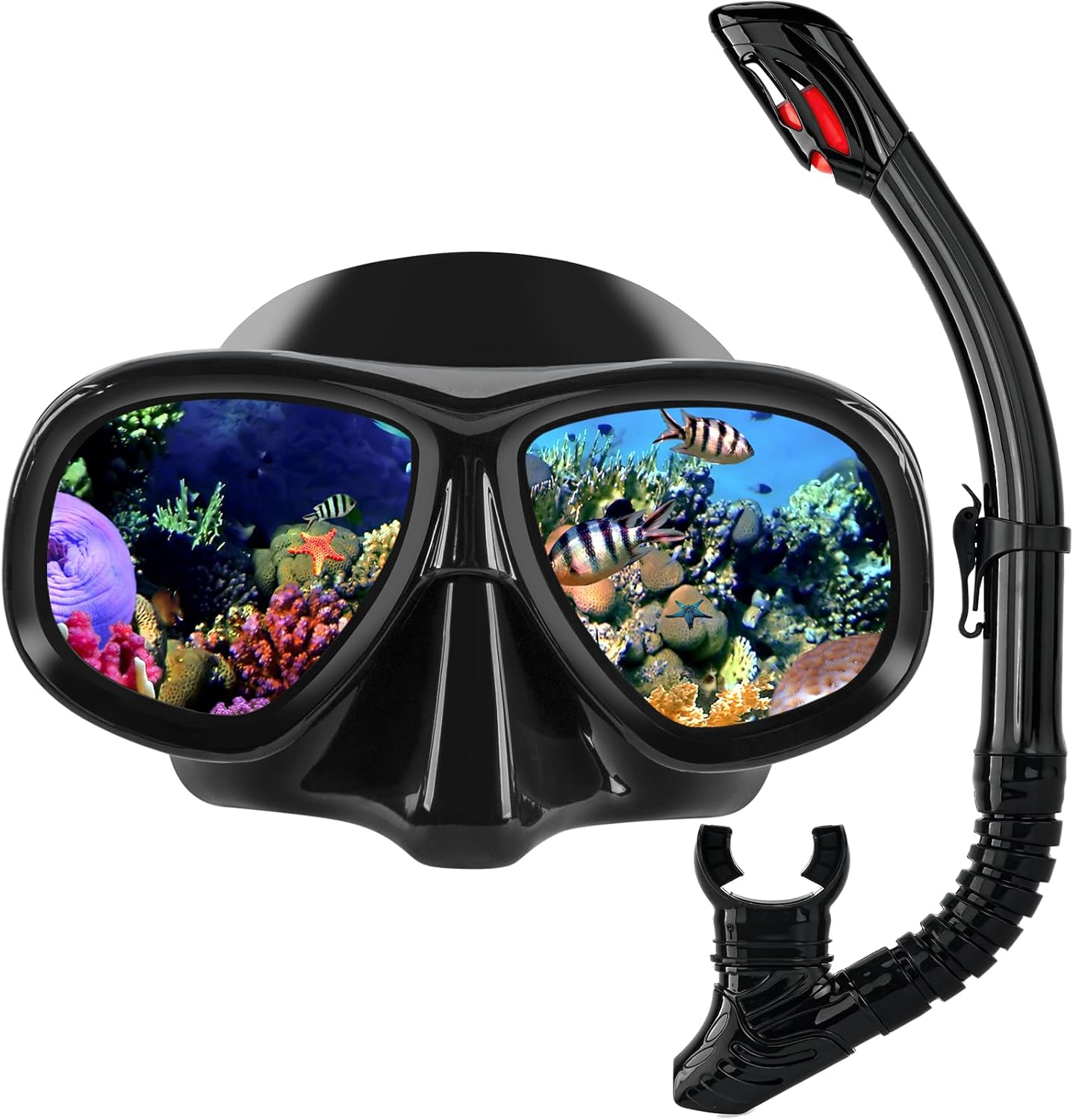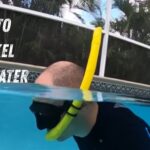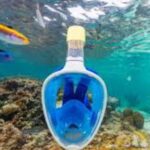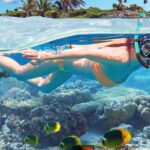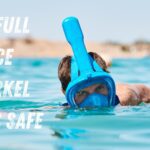Can You Breathe Underwater With A Snorkel
Can you breathe underwater with a snorkel? Sure, if you’re Aquaman. For the rest of us with more lungs than gills, the answer is a bit more complicated and no, a snorkel doesn’t magically let you gulp air while exploring the Titanic’s remains.
Let’s be honest, the idea sounds deceptively simple: stick a plastic tube in your mouth and voilà, underwater explorer! But that’s not quite how things work unless you’re planning to hover face-down at the surface like a curious pancake.
In this article, we’ll untangle the myths, calm your nerves, and explain with cold, splashy facts exactly how to breathe properly (and safely) while snorkeling. By the end, you’ll be prepared for your first dive into the world of underwater snorkeling and no, you won’t drown.
Can You Breathe Underwater With a Snorkel?
No, you cannot breathe underwater with a snorkel if the snorkel is completely submerged. A traditional snorkel is simply a breathing tube that allows you to inhale air from above the water surface while your face is underwater.
In other words, the snorkel must stay above the waterline for air to reach your lungs. If the entire tube goes underwater, it just becomes a pipe full of seawater—and trust me, saltwater doesn’t taste nearly as exotic as it sounds.
If you want to breathe underwater while fully submerged, you’d need scuba gear, not a snorkel. A snorkel has no air supply of its own—it’s just a fancy straw. That’s a hard truth many beginners don’t realize until they’re sputtering in the shallows.
How Does a Snorkel Work?
The mechanics are elegant in their simplicity. Here’s the quick science:
- A snorkel is a J- or L-shaped tube (usually 12–16 inches long) that connects your mouth to the open air above the water.
- While your face is underwater, as long as the top of the snorkel is above the water, you can breathe in and out.
- The moment that top dips below the surface, the tube fills with water and breathing stops unless you purge it.
Snorkels rely purely on your lung power. There’s no pump, filter, or oxygen tank. Just you, your snorkel, and gravity laughing in the background.
This is also why you can’t use a super-long snorkel. Why? Because the deeper you go, the higher the water pressure and your lungs can’t draw in enough air through a long tube. Studies have shown that even a snorkel longer than 16 inches starts to challenge safe breathing due to pressure resistance.
What Happens If Water Gets Into Your Snorkel?
Now here’s the part that makes first-time snorkelers do the panicked dolphin kick of doom.
Water will get into your snorkel, thanks to waves, splashes, or dips of your head. But don’t worry. There are ways to clear it like a pro:
Two Clearing Methods
1. Blast Clear (Traditional Snorkel)
- Exhale forcefully through the snorkel to blow the water out the top.
- Works best with practice and decent lung strength.
2. Displacement Clear (Dry Snorkels)
- Water is prevented from entering in the first place thanks to a float valve that seals the tube.
- Perfect for beginners or calm breathing types.
Pro Tip: How does a snorkel work better? Use a dry snorkel with a purge valve. It’s designed to stay clear and easy to clean.
How Do You Breathe Underwater With a Snorkel… Without Panicking?
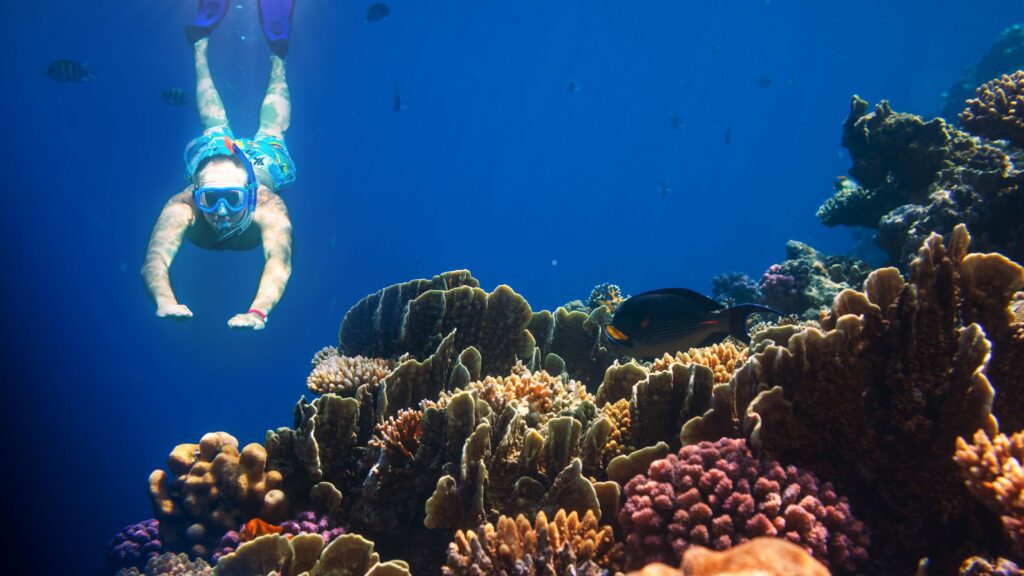
If you’ve ever hyperventilated while trying to act cool in a rental snorkel mask, you’re not alone.
Here’s how to breathe without losing your mind:
- Relax before you enter the water. Shallow breaths invite panic.
- Don’t bite too hard on the mouthpiece. You’re not trying to chew it.
- Float face-down in calm, shallow water to practice.
- Breathe slowly, steadily, and rhythmically.
- Exhale through your mouth, not your nose, especially with a traditional snorkel.
Studies on diving behavior show that breath control improves significantly with. So, don’t expect perfect Zen on your first try, but do stick with it.
What Is a Dry Snorkel And Should You Use One?
Yes. Yes. And did we mention YES?
A dry snorkel includes a one-way valve that closes when submerged and opens when above water. This means:
- Less water in your mouth
- No surprise gulps of the ocean
- Easier breathing
- Less time clearing your snorkel tube
Dry snorkels are especially ideal for:
- Kids
- New snorkelers
- Choppy waters
But how safe are full face snorkel masks? They’re comfortable and cover the entire face, making breathing more natural. But use high-quality models only, cheap ones can trap CO₂ if poorly designed.
Can You Go Deep While Wearing a Snorkel?
Here’s where confusion often sets in.
You cannot breathe while fully underwater with a snorkel.
If you’re going to dive below the surface, you’re practicing freediving and you’ll need to hold your breath during the dive.
Once you resurface and the snorkel clears the water, you can start breathing again – after blowing out the water inside, of course.
Trying to breathe while submerged through a snorkel is a one-way ticket to inhaling water.
Can You Breathe Underwater with a Dry Snorkel?
No, you cannot breathe while fully submerged underwater with a dry snorkel.
Let’s clear up a big misconception right away: A dry snorkel doesn’t let you breathe underwater, it just makes it easier to breathe while at the surface by keeping water out of the tube.
Here’s how a dry snorkel works:
- It has a float valve at the top that automatically seals the snorkel when you dip below the surface.
- This prevents water from entering the tube, so when you pop back up, there’s no need to blow out water (as you would with a traditional snorkel).
- Once the top of the snorkel is back above the water, the valve reopens, allowing you to breathe.
Important Reminder: If the top of the snorkel is underwater, you still can’t breathe, even with a dry snorkel. There’s no magic air supply in there. It’s just a valve that blocks water when submerged and reopens above water.
So, a dry snorkel improves safety and convenience, but you must stay at the surface to breathe.
What Is the Point of a Snorkel Underwater?
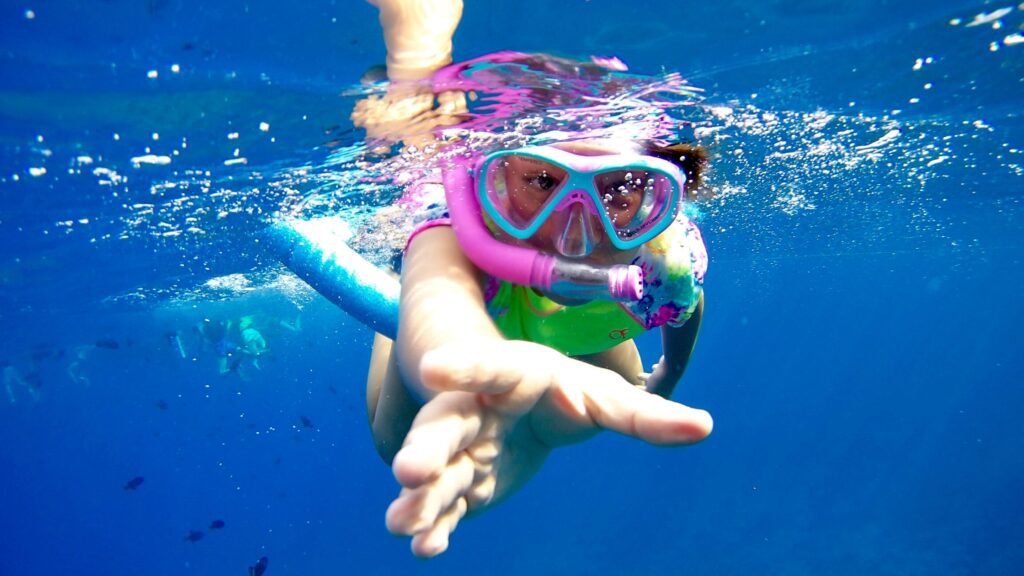
This question confuses many first-time snorkelers because it seems like the snorkel should work “underwater.”
But the main point of a snorkel even when your face is in the water is to allow you to breathe air from the surface while observing the underwater world below.
Think of it like this:
- You float face-down, eyes and mask underwater, mouth above water via the snorkel.
- This lets you relax and breathe comfortably without lifting your head.
- The snorkel is not used while diving deep, once you’re fully submerged, the snorkel is just along for the ride (until you resurface and breathe again).
Advanced use: Some free divers use snorkels only at the surface and then remove or spit them out before diving down, because they don’t breathe through them while underwater anyway.
The point of a snorkel underwater is to let you observe marine life face-down without constantly lifting your head to breathe—as long as the top of the snorkel is still above water.
How Long Can You Breathe Underwater with a Full Face Snorkel Mask?
Here’s where things get a bit trickier because full face snorkel masks are often misunderstood.
👉 First, a full face snorkel mask still uses a snorkel – it’s just integrated into the top of the mask.
👉 Second, it still requires that the snorkel remains above the surface for you to breathe. It’s not a substitute for scuba diving gear.
If the top of the full-face snorkel mask goes underwater, you can’t breathe anymore.
That said, the advantage of a full-face mask is:
- You can breathe through both your nose and mouth
- It offers a wider field of vision
- It feels more natural and comfortable for many beginners
So how long can you breathe with it underwater?
- ✅ As long as the snorkel stays above the surface, you can breathe indefinitely (or until you decide to swim or dive).
- ❌ Once fully submerged, you must hold your breath, just like with a regular snorkel.
⚠️ Safety Note: Always use a high-quality, certified full-face mask. Poorly designed models may cause CO₂ buildup if ventilation isn’t adequate, leading to lightheadedness or even blackouts. That’s why reputable brands and proper fit are crucial.
You can breathe for as long as you stay at the surface with a full face snorkel mask. But if you go underwater, it’s breath-hold only just like traditional snorkeling.
Is Snorkeling Safe for Kids and Non-Swimmers?
This is a massive concern for parents and beginners.
The answer: Yes, with the right gear, guidance, and conditions.
What You Need to Know:
- Always snorkel in calm waters first (lagoons or bays).
- Use snorkeling vests for flotation.
- Choose dry snorkels for ease of breathing.
- Stay within shallow depth limits.
Meanwhile, do you need to know swimming for snorkeling? Not necessarily, if you wear a flotation device and stay in calm water. But comfort in the water is essential.
What Do You Need for Snorkeling?
Let’s break down the snorkeling starter pack:
- Snorkel: Dry snorkel recommended
- Mask: Comfortable, leak-proof seal
- Fins: Optional but useful for propulsion
- Flotation vest: Crucial for non-swimmers
- Reef-safe sunscreen: Protect yourself and the ocean
- Anti-fog solution: Clear vision = better adventure
How to Do Snorkeling the Right Way
If you’re still wondering how to snorkel without looking like a flailing jellyfish, this step-by-step is for you:
- Gear up on land – mask, snorkel, fins (if using).
- Enter the water slowly – waist deep first.
- Practice floating face-down and breathing gently.
- Look for coral, fish, and fascinating bottom textures.
- Don’t touch anything – protect marine life.
- Stay close to shore or a guide if you’re new.
Mastering how to use snorkeling gear ahead of time makes a huge difference.
Can You Snorkel With Glasses?
|
|
|
Short answer: Not comfortably.
Regular glasses won’t fit under a snorkeling mask. However:
- Use prescription snorkel masks
- Or get stick-on corrective lenses for your snorkel mask
- Contacts are another option, but keep eyes closed when flooding mask
How Much Weight Do You Need for Snorkeling?
Most casual snorkelers don’t need extra weight. But in some cases, a small weight belt helps you float face-down more comfortably, especially if you’re naturally buoyant or wearing a wetsuit.
Too much weight = danger. Always get advice from professionals.
Where to Snorkel
Oahu, Hawaii is snorkel heaven. Here are a few top picks:
- Hanauma Bay – Legendary visibility and marine life
- Shark’s Cove – Dramatic lava rock formations
- Electric Beach – Warm water attracts colorful fish
- Kahe Point – Great for experienced snorkelers
- Waimea Bay – Calm in summer, powerful in winter
RELATED: Can you snorkel while pregnant?
The Bottom Line on Can You Breathe Underwater With a Snorkel?
Can you breathe underwater with a snorkel? Only if the snorkel’s top stays above the water. It’s a surface-breathing device, not scuba gear. If your whole head goes under, you’ll need to hold your breath until you resurface.
But once you understand how a snorkel work, and you take it step by step, underwater snorkeling becomes an incredible, accessible, and even meditative experience.
You don’t need to be a marine biologist or a mermaid to enjoy it. You just need the right gear, the right mindset, and a good understanding of what your snorkel can and can’t do.
